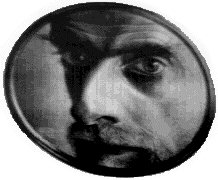
|
|





|







It is, for example, a pleasure to deliberately mix together objects of two and three dimensions, surface and spatial relationships and to make fun
of gravity.
- M.C. Escher
 Maurits Cornelis Escher (Mauk for friends) was a Dutch graphic
artist born on Jun 17, 1898 and dead on Mar 27, 1972.
Maurits Cornelis Escher (Mauk for friends) was a Dutch graphic
artist born on Jun 17, 1898 and dead on Mar 27, 1972.His father was an engineer and his mother a government minister's daughter. He attended the School for Architecture and Decorative Arts in Haarlem.
Some of Escher's woodcuts were published for the first time in the booklet Flor de Pascua, by A.P. Van Stolk.
During his whole life he traveled to Spain and to Italy, where he lived from november 1922 until 1935 (Ravello, Siena - where his first one-man exhibition was held in 1923, and Rome).
From is wife Jetta, who first met when he lived in Ravello, he had three sons.
After moving to Switzerland ('35), Escher took a sea trip along the coasts of Italy, France and Spain, where he returned to Alhambra and also visited the mosque in Cordoba. At that time he moved from landscapes to graphic works and tilings.
These works were based on his subtle reasearch on the interplay between background and figure, which he called Regular Division of The Plane . Through the use of cleverly distorted perspective, the artist conveys the idea that motion is meaningless and everything is continously returning to its starting point.
From 1940 till his death Escher lived in Holland, forced to move by German occupation.
As time passed, Escher's works got more and more famous and appreciated; on April 30 1955 he was knignted with the Knighthood of The Order of Oranje Nassau, while in 1958 he published The Regular Division of The Plane.
But, while Escher fame rose, his healt felt: he was subject to operations in 1962, 1964 and 1970. At the age of 73, Escher died in the hospital in Hilversum.
Escher explored a strange world of optical illusion, visual puns, distorted
perspectives and repeating geometric patterns (tessellations).
One of his favourite themes was Metamorphosis, which portrays a
gradual transformation of one shape into another.
Escher created a visual paradox in the lithograph
Relativity ![]() (1953), by combining three separate perspectives into a unified, coherent
whole.
(1953), by combining three separate perspectives into a unified, coherent
whole.
Go to the top of the page